Indonesia: Java, Bali, and Komodo Islands - September 10 - October 2, 2017
Part Two - Bali, Indonesia
Page Two - Balinese Villages & a Royal Residence
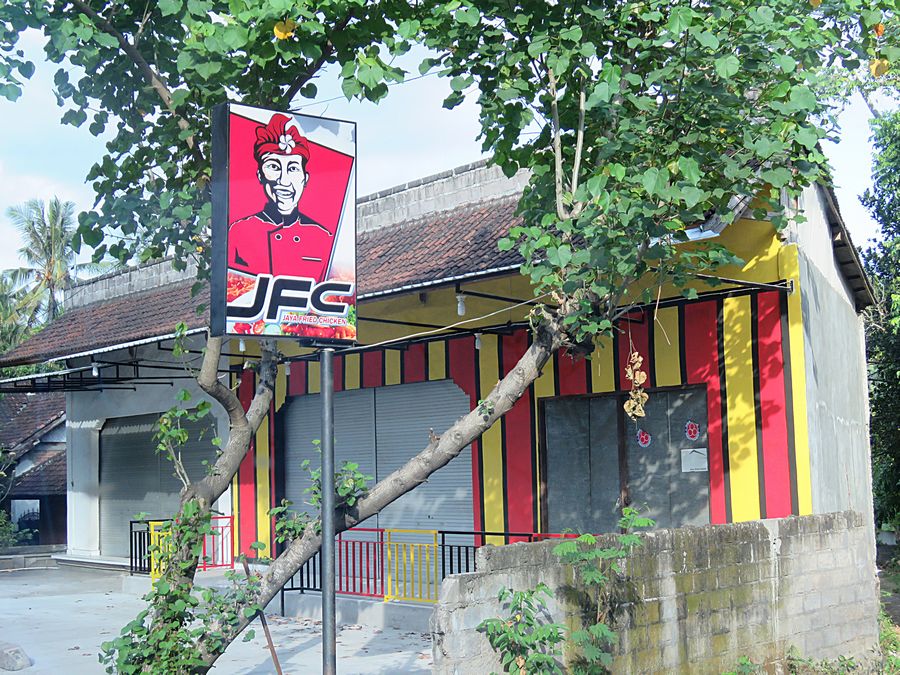
In Indonesia, they have Java Fried Chicken, instead of
Kentucky Fried Chicken. We did see lots of U.S. fast food restaurants
in Indonesia,
such as McDonalds.
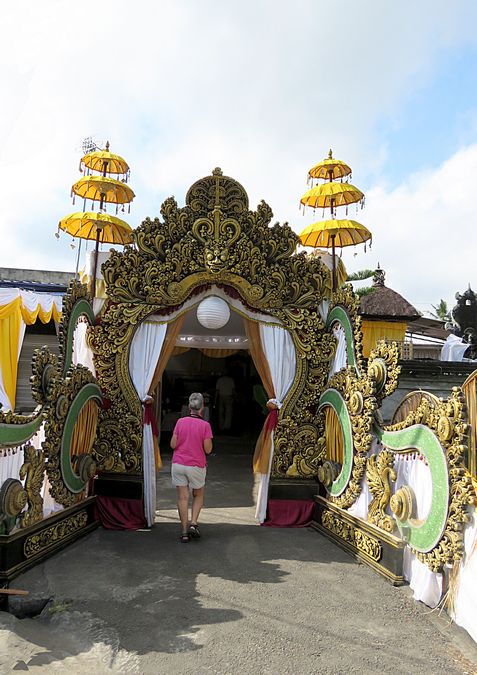
Our local guide Darma noticed a home was preparing for a wedding,
so he asked the family if we could look at their preparations. Wedding
decoration at entrance to the home. Since this family lives near Mt. Agung,
they are probably still in a shelter waiting to return home and maybe the
wedding has not yet occurred as of this posting.
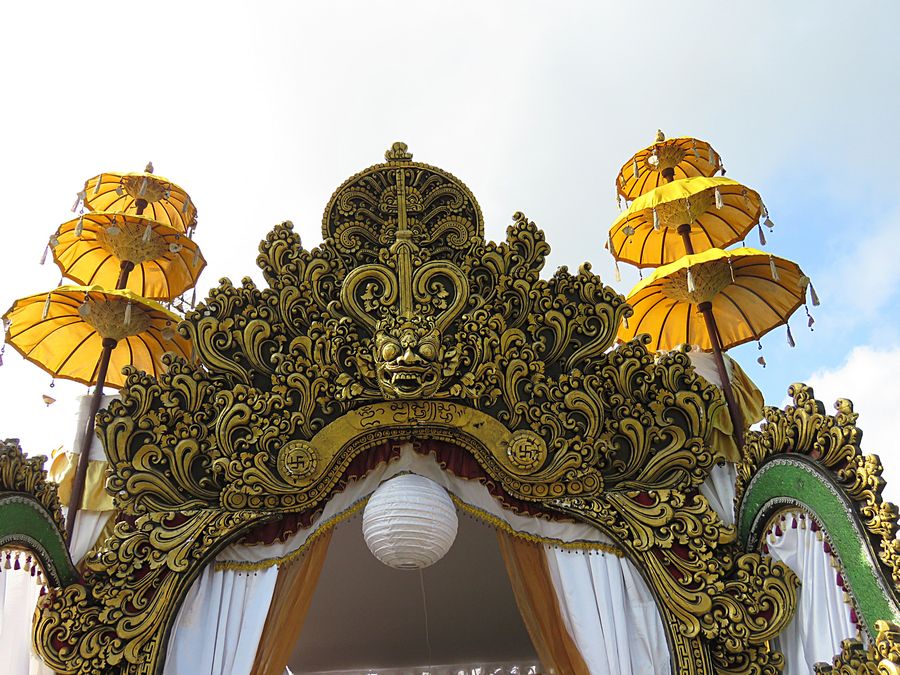
Weddings are considered a very important part of life for the Balinese
because they are an implementation of yadnya, or ritual — a way to
harmonize the material and the spiritual worlds. The wedding, or pawiwahan,
is sacred because it is considered to be a testimony before three very
important forms of witnesses: the gods, the beings of the underworld, and
fellow human beings.The pawiwahan ceremony is also important because
it is not until the completion of the ceremony that the bride and groom are
regarded as full citizens of their villages, with all the rights and obligations.
Finally, the wedding is important because future offspring will continue the
Balinese way of life and provide an opportunity for ancestors to reincarnate.
For the bride and groom, the wedding is more than just the union with their
spouse — it is as important a life event as it is a spiritual milestone.
Before this milestone can be reached, however, the wedding must be
performed in sequence, which, for the Balinese, is determined by a priest
according to the right place, the right date, and the right circumstances.
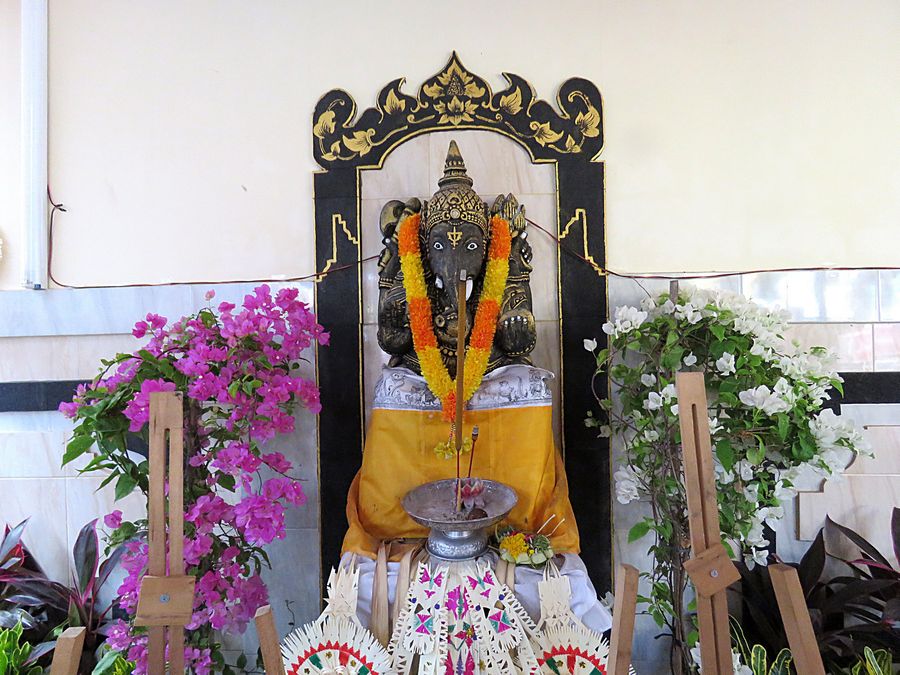
The groom's family visits the bride's family to inform them that the groom
wants to marry the bride. The bride confirms that she wants to marry the
groom, and her family also consents to the union — all before various
community members. The groom then excuses himself to consult with his
priest about the best time and place for the wedding. Next, the groom's
family visits the bride's family again to bring several gifts and offerings,
including food and clothing. At this time, the bride and groom also
exchange rings to signify their unity. After this visit, both the bride and the
groom seclude themselves in their homes for three days, until the next phase
of the wedding ritual. When it is time to "pick up" the bride, a procession
starts at the home of the groom. After praying at the family temple, the
groom and his family go to the bride's house to get her.
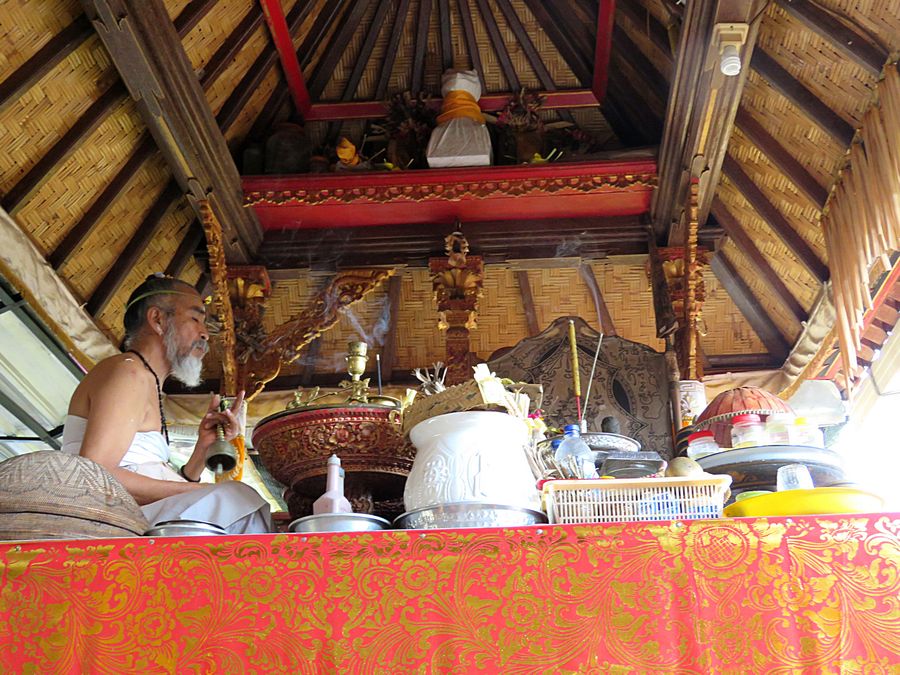
The father of the groom was also a priest. He was praying for the marriage
at the family temple at the home.
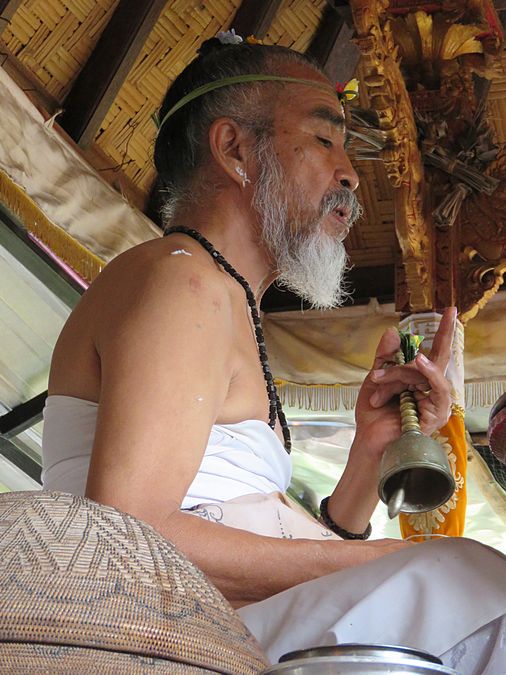
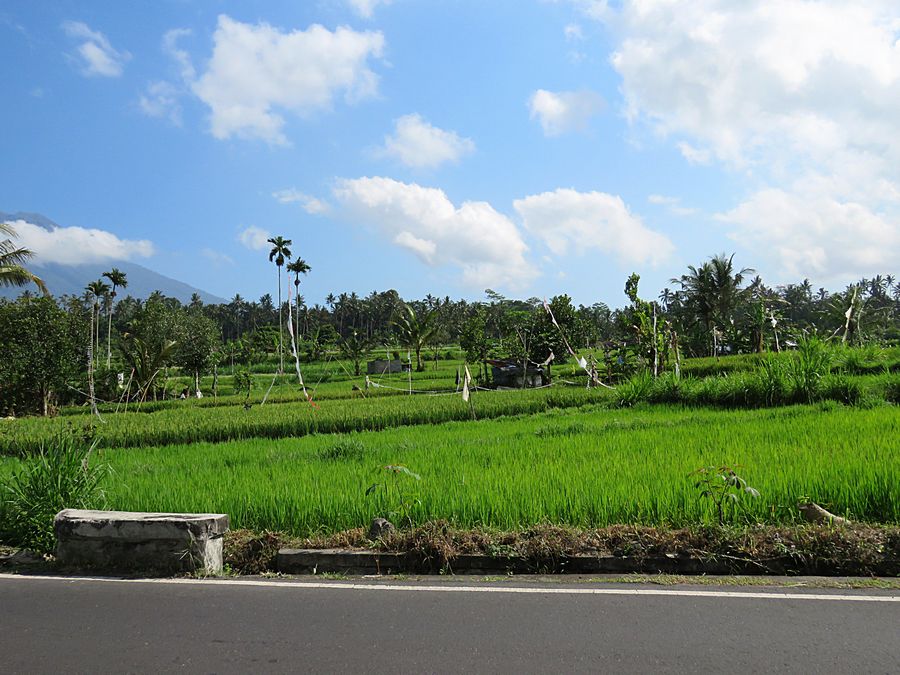
Mt. Agung can just barely be seen on the left. Rice field in the foreground.
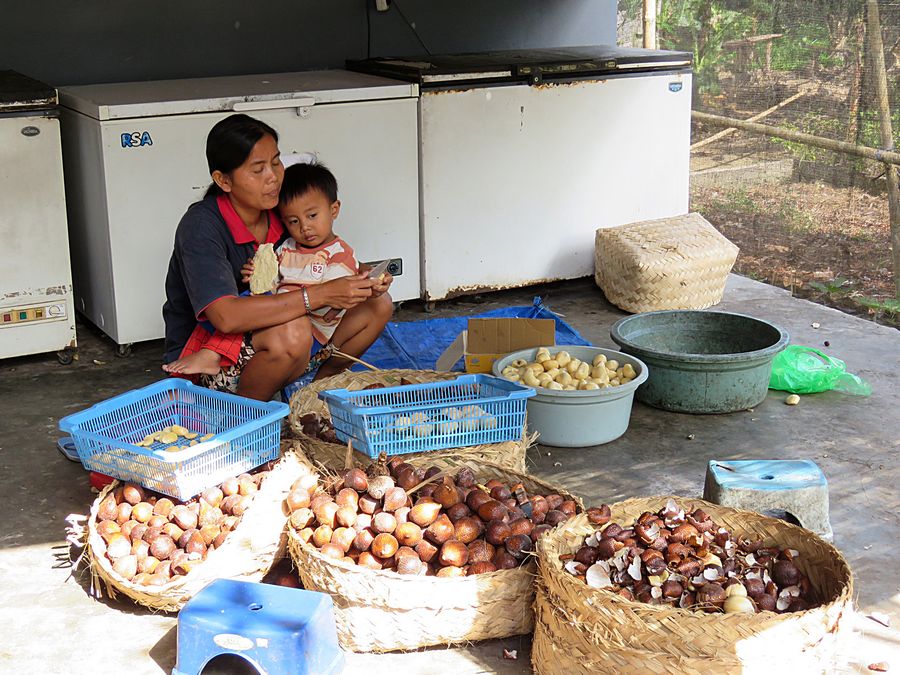
We stopped along the road to visit a family run business harvesting
fruit and making juice. Here a member of the family is working while
holding her child. This family also would have had to evacuate because
of Mt. Agung's volcanic activity.
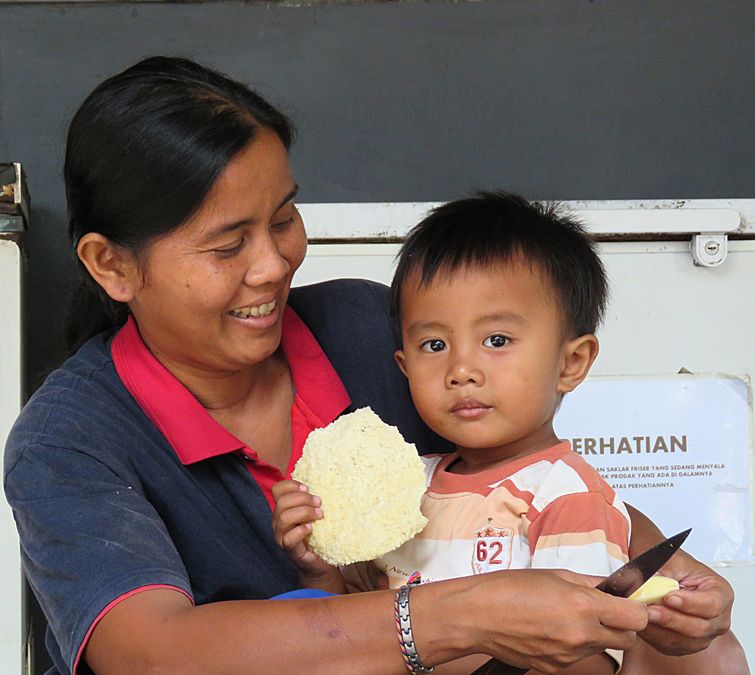
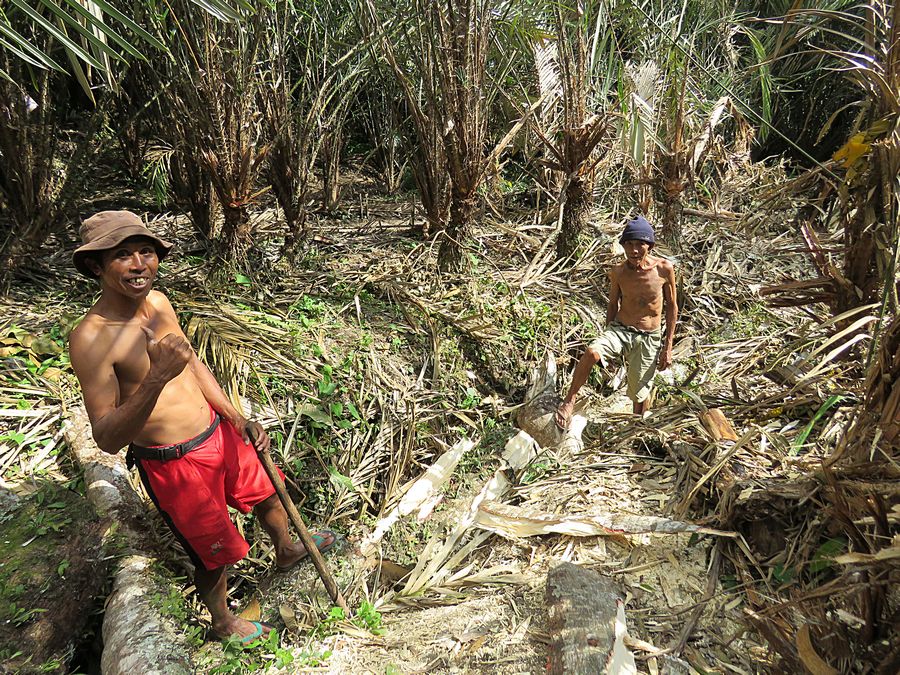
Workers at the fruit farm
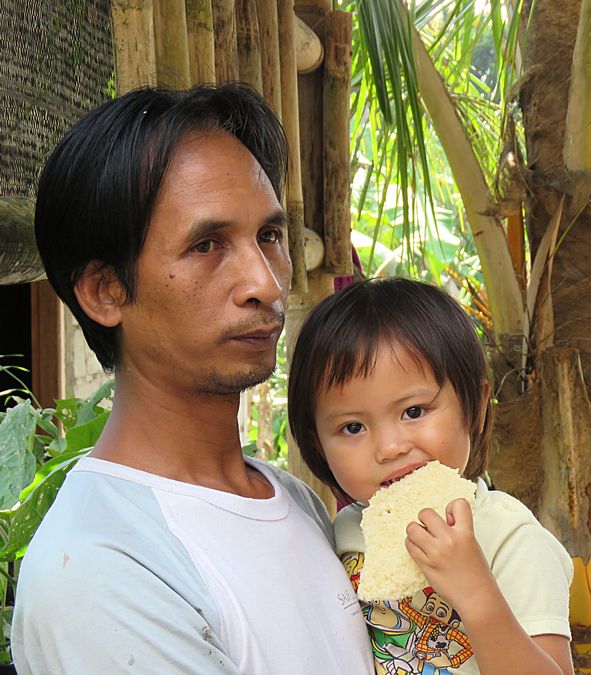
Father and daughter at fruit farm. Everywhere we went, fathers seemed to be very loving
toward their children.
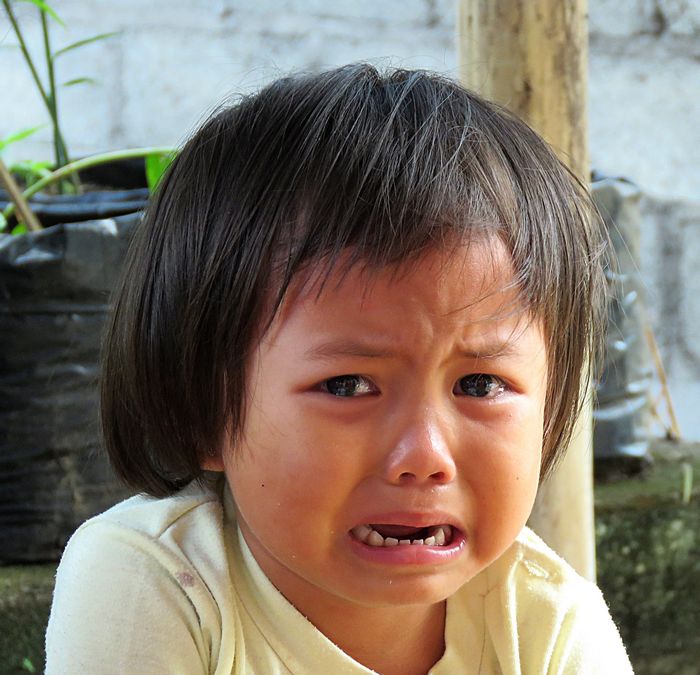
The same child suddenly crying. A few minutes later, she was
smiling. Like kids everywhere, their moods can change suddenly.
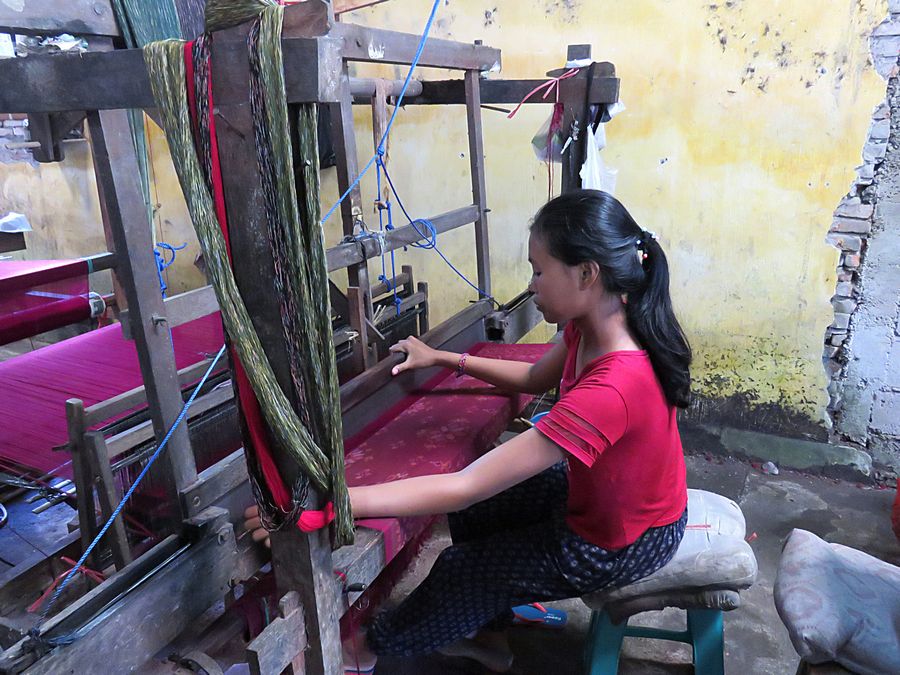
We drove to the village of Sidemen, a mountain village where weavers
make Balinese ikat textiles. Ikat is a dyeing technique used to pattern textiles.
Balinese textiles are reflective of historical traditions. Bali was linked to the
major courts of Java before the 10th century. After the defeat of the
Majapahit kingdom, many of the Javanese aristocracy fled to Bali. The
traditions were continued. Bali is therefore a place not only of its own arts
but also those of Java in the pre-Islamic 15th century.
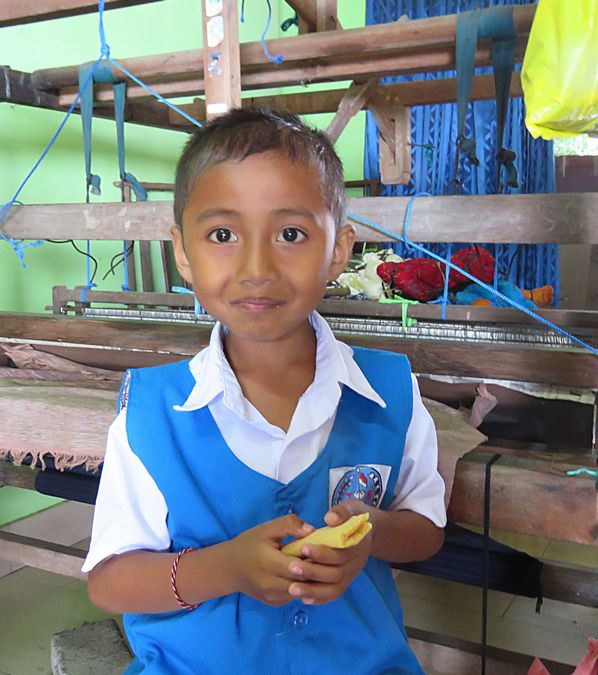
Child standing nearby while his mother is working on a loom.
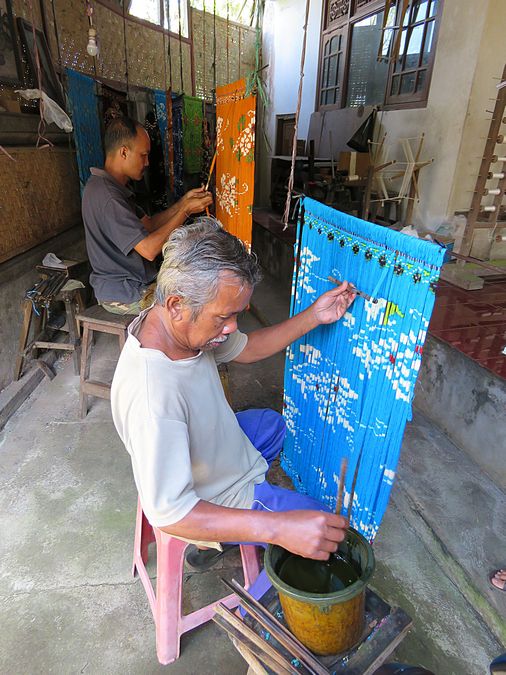
Men working on the ikat textile design
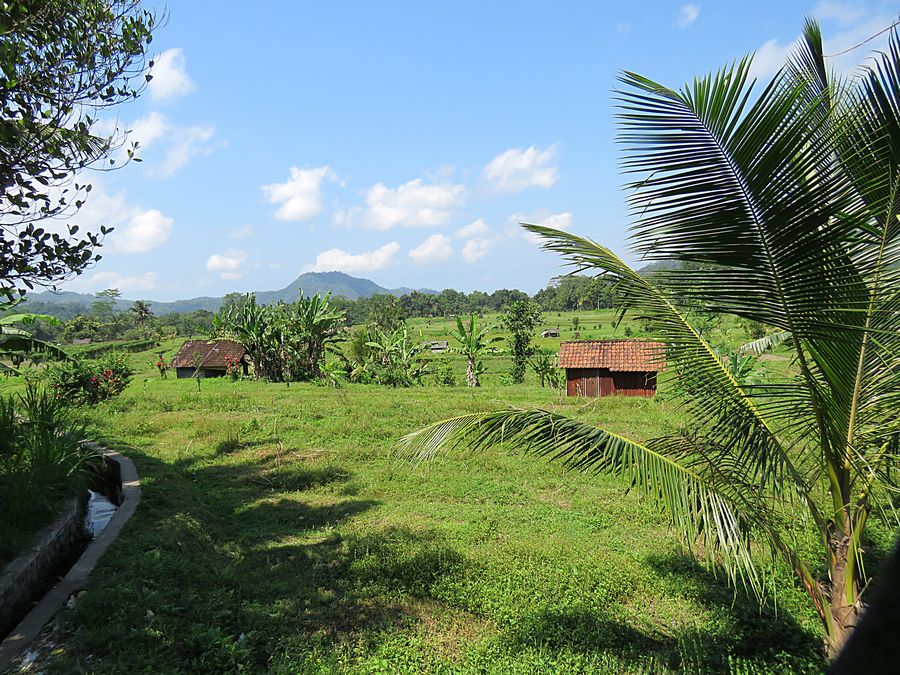
View from the textile place. The people here would have had to
evacuate as well.
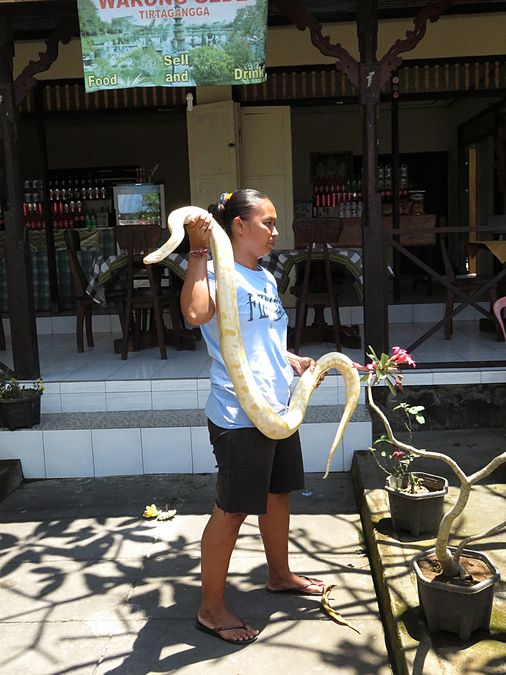
Woman with a python near Tirta Gangga, a former residence of the Karem
Asem royal family. Turta Gangga was built around a sacred spring that feeds
4 large pools dotted with stone statues, shrines, and pagodas.
This area is
also near Mt. Agung.
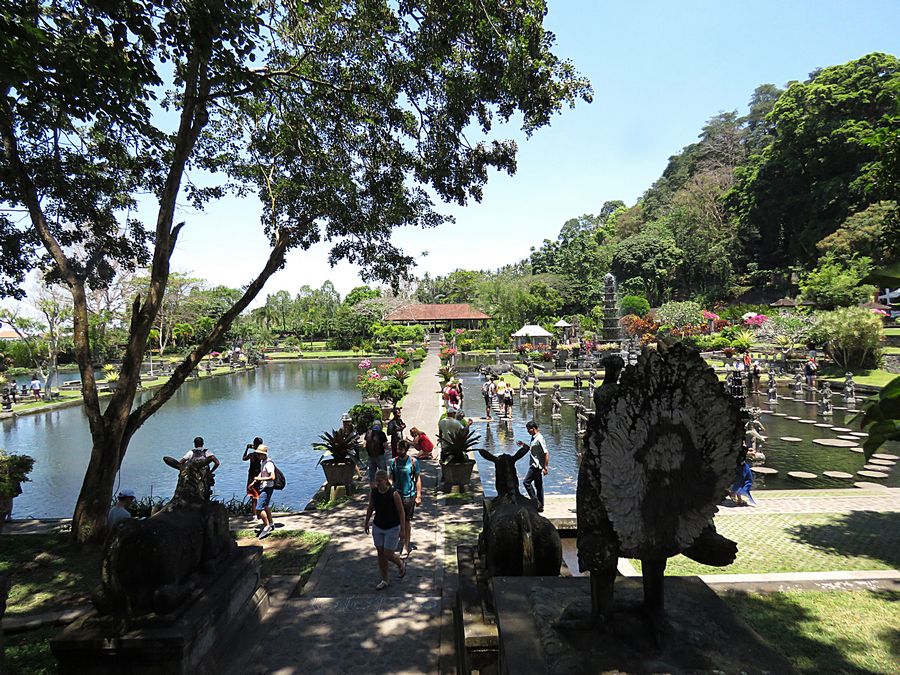
Tirta Gangga - which literally means water from the Ganges. It is a site of reverence
for the Hindu Balinese. The name refers to the water palace built in 1948 by
the Raja of Karangasem.
It is also the name widely used to refer to the general area which includes
the water palace and the lush rural areas around. The complex was built
by the late King of Karangsem but was destroyed almost entirely by
the eruption of nearby Mount Agung in 1963, which is now threatening
eruption again. It has been re-built and restored.
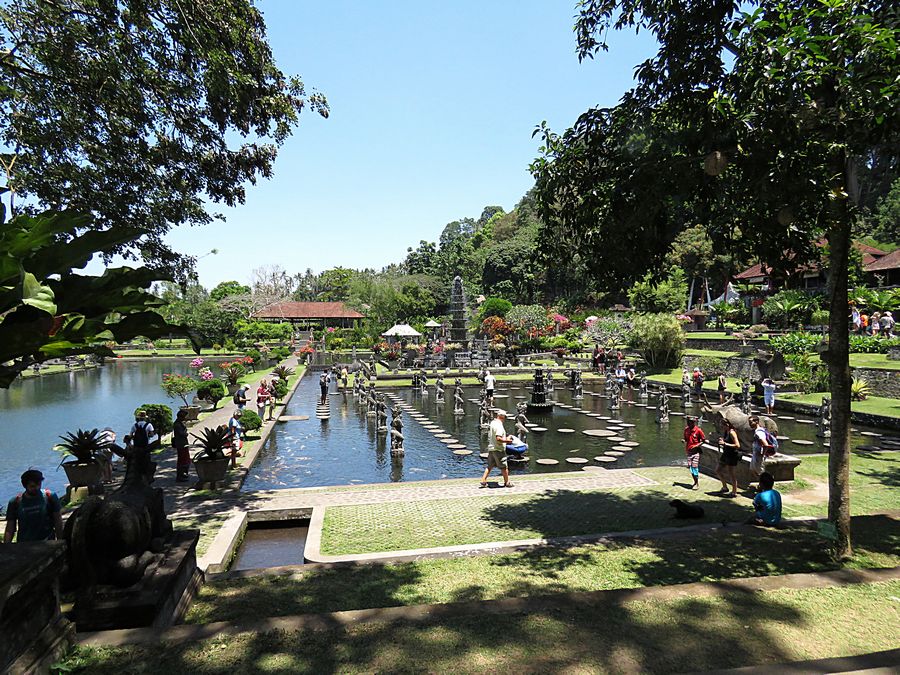
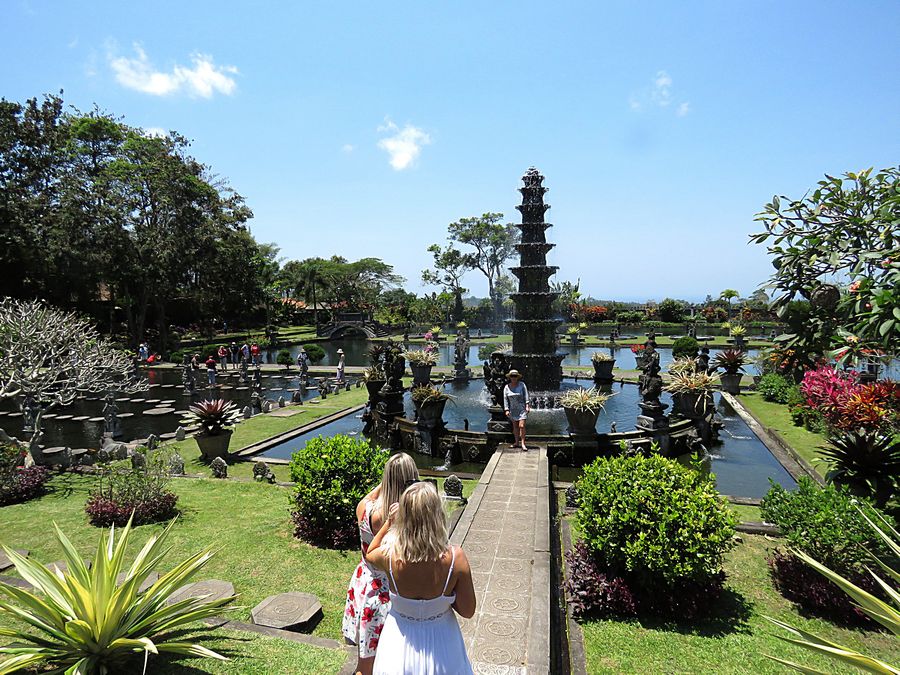
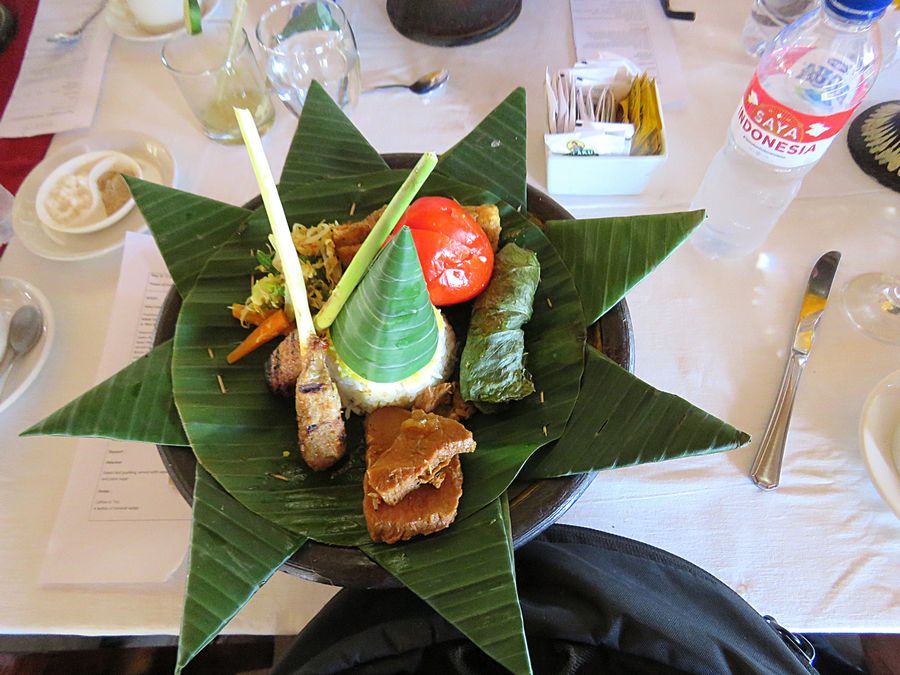
We ate lunch at a restaurant at Turta Gangga.
I had Megibung for lunch - Steamed rice, grilled minced fish with grated
coconut, served on a lemon grass stick, grilled Bali chicken, steamed shrimp
with grated coconut wrapped in a vegetable leaf, pork in sweet sauce.
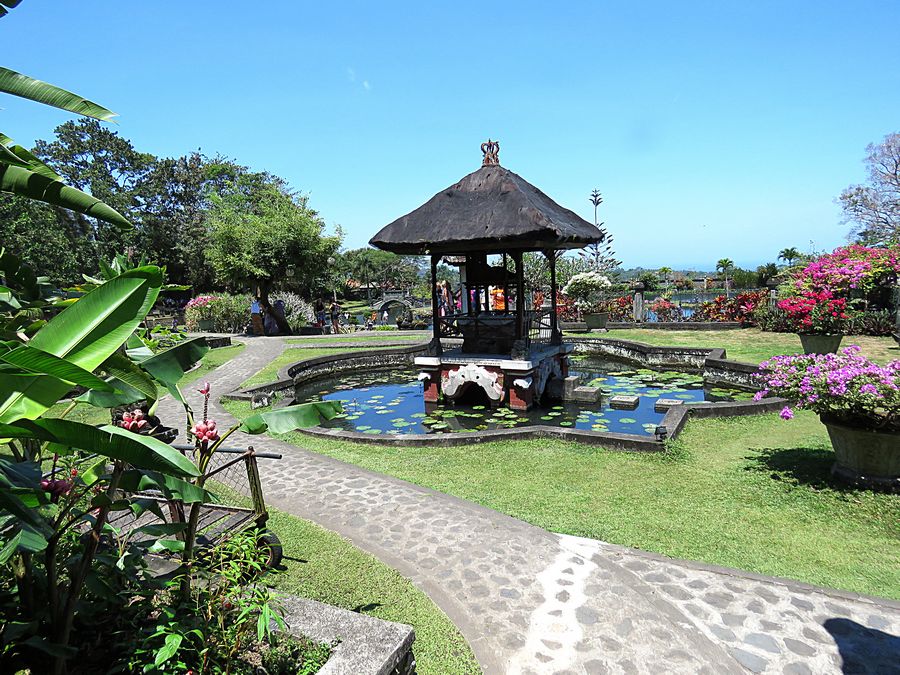
After lunch, we had time to wander around Turta Gangga some more.
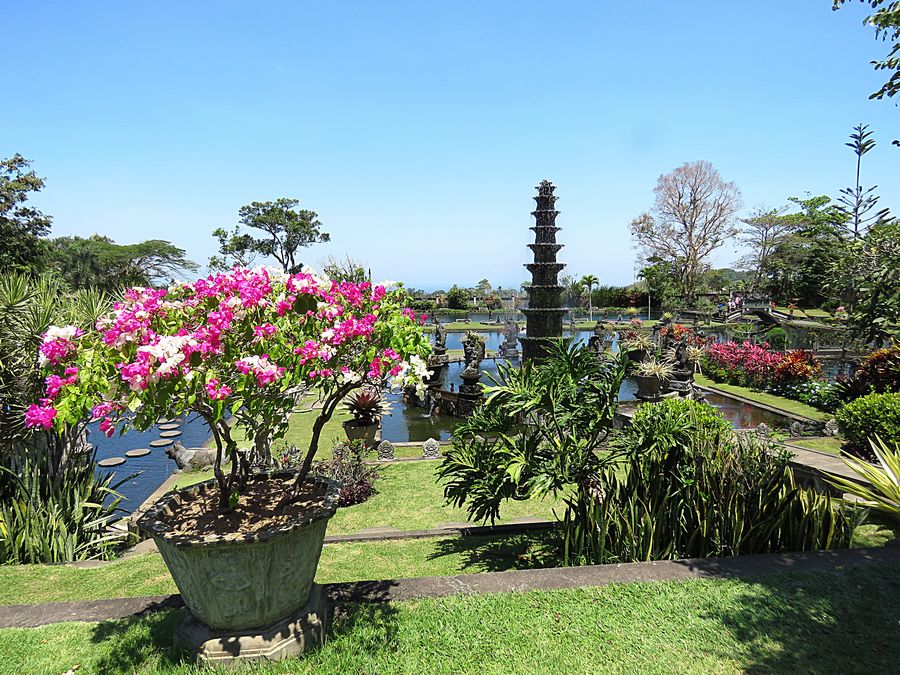
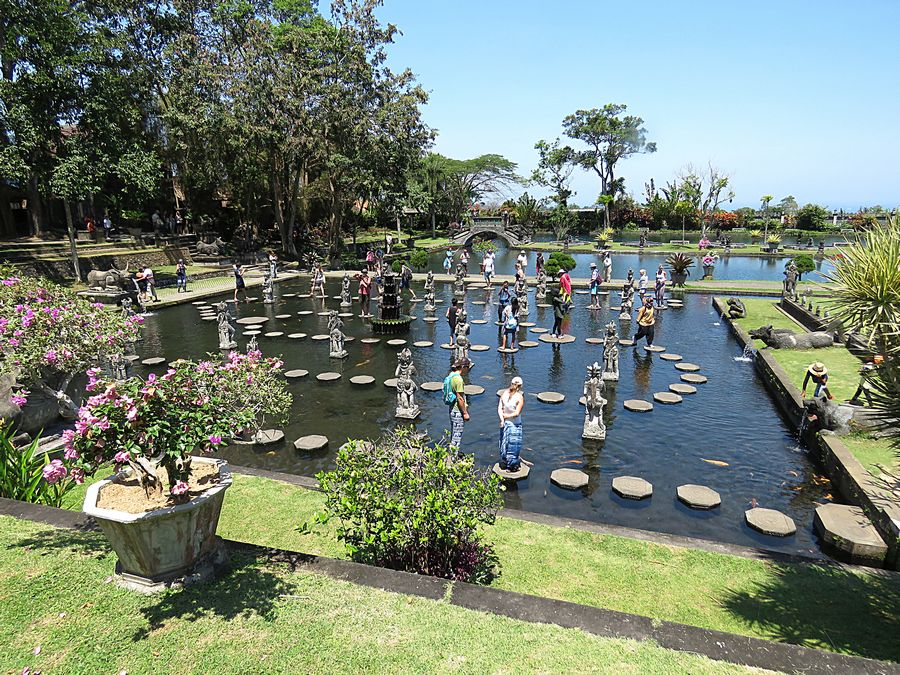
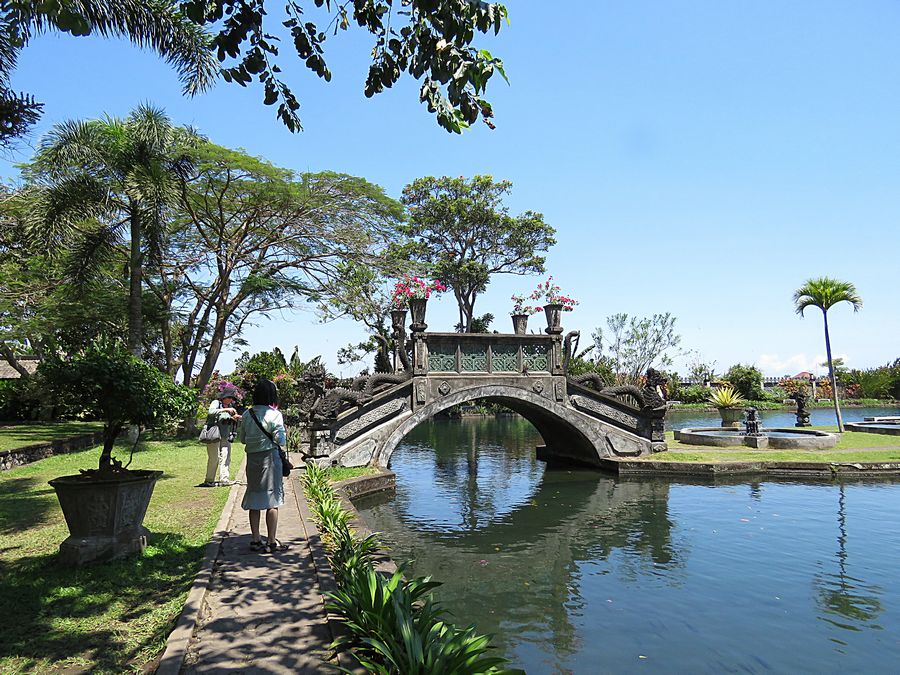
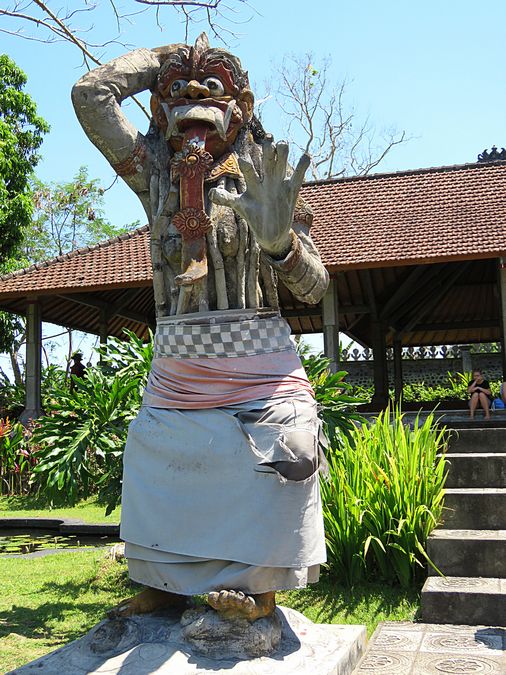
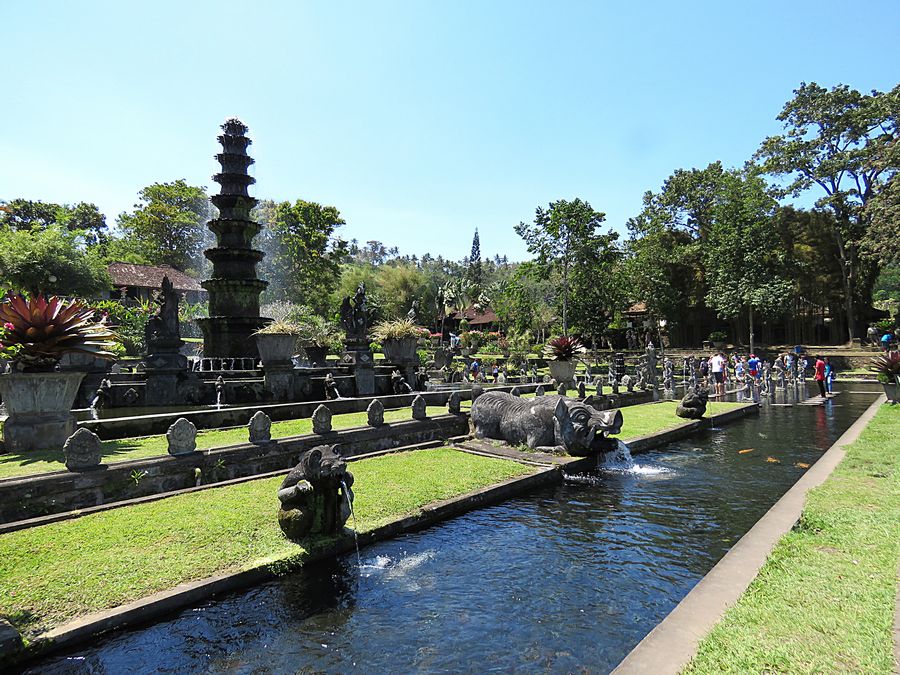
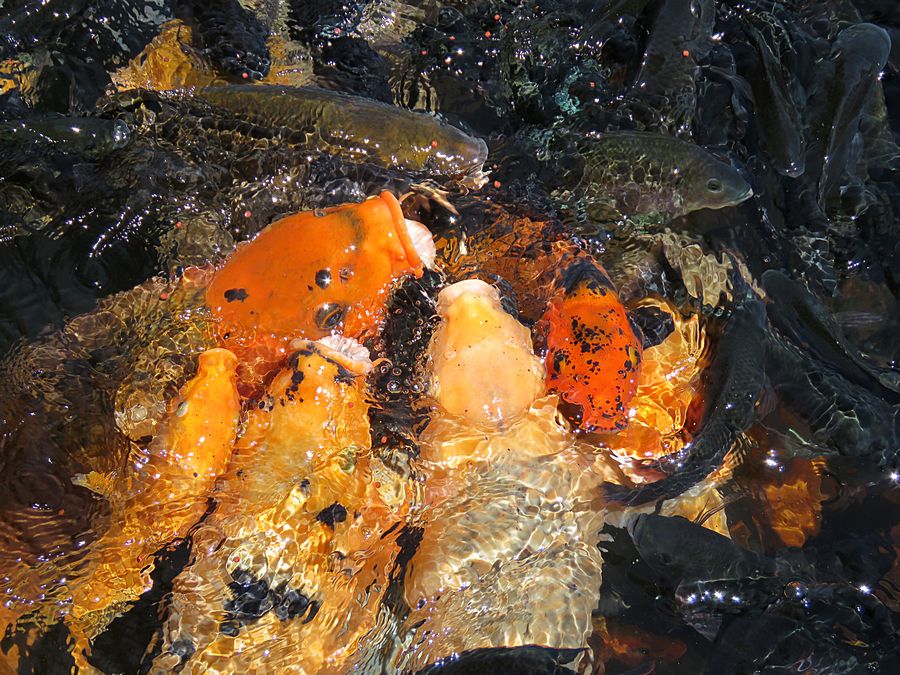
People were feeding the fish in the ponds.
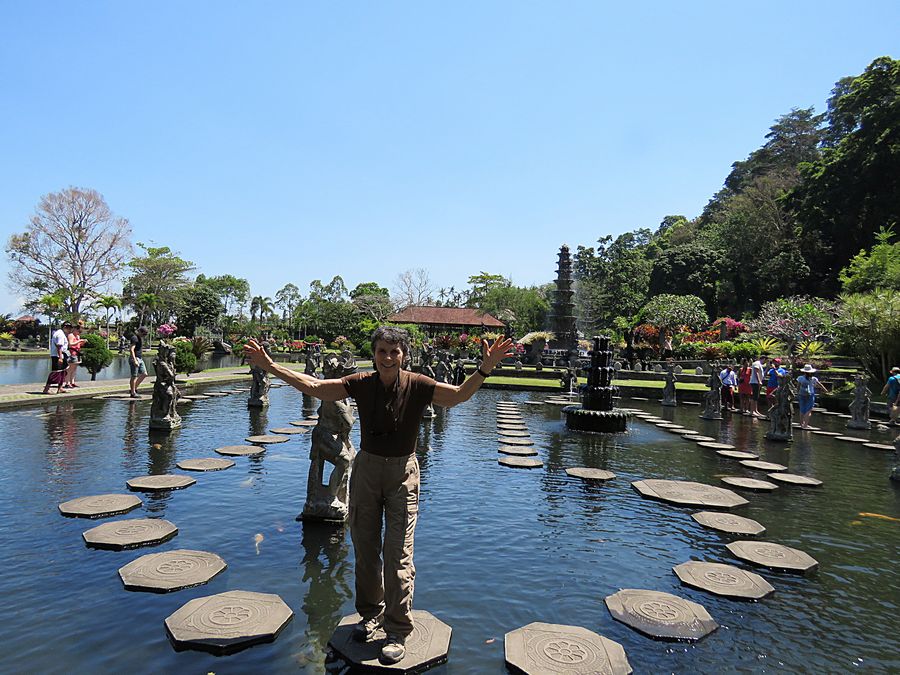
Pat balancing on one of the stones in one of the pools
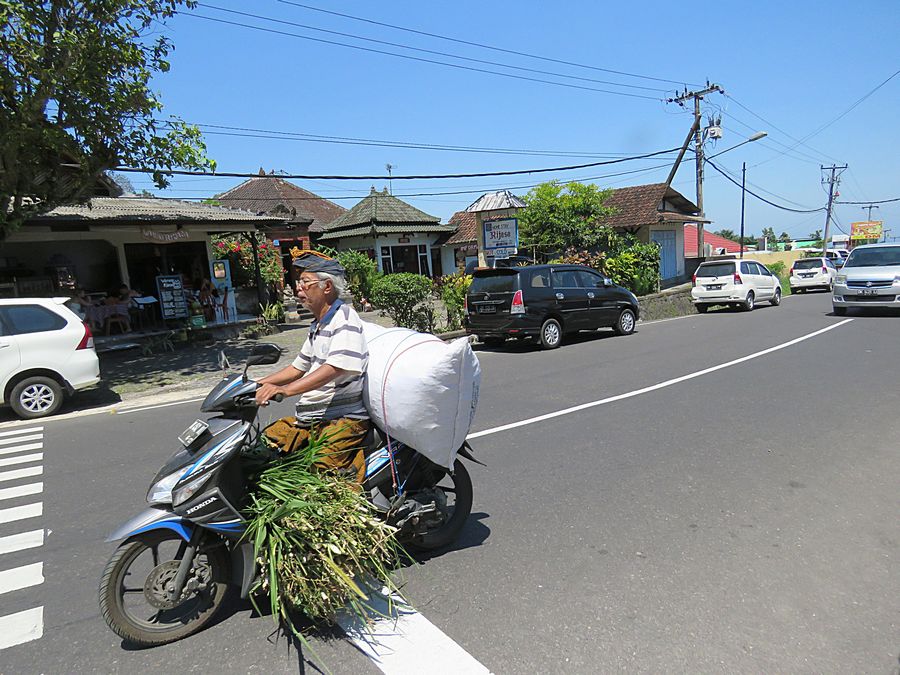
Leaving the Tarta Gangga area
Village scene with a Balinese using a common form
of transportation, motor scooter, to transport items.
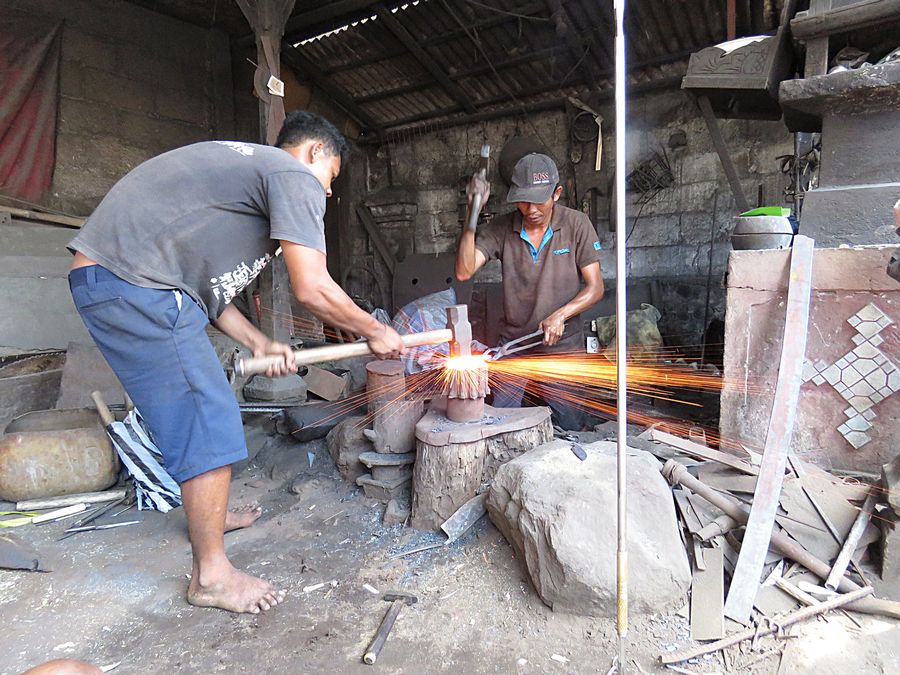
In Budakeling, a small village known for its blacksmiths
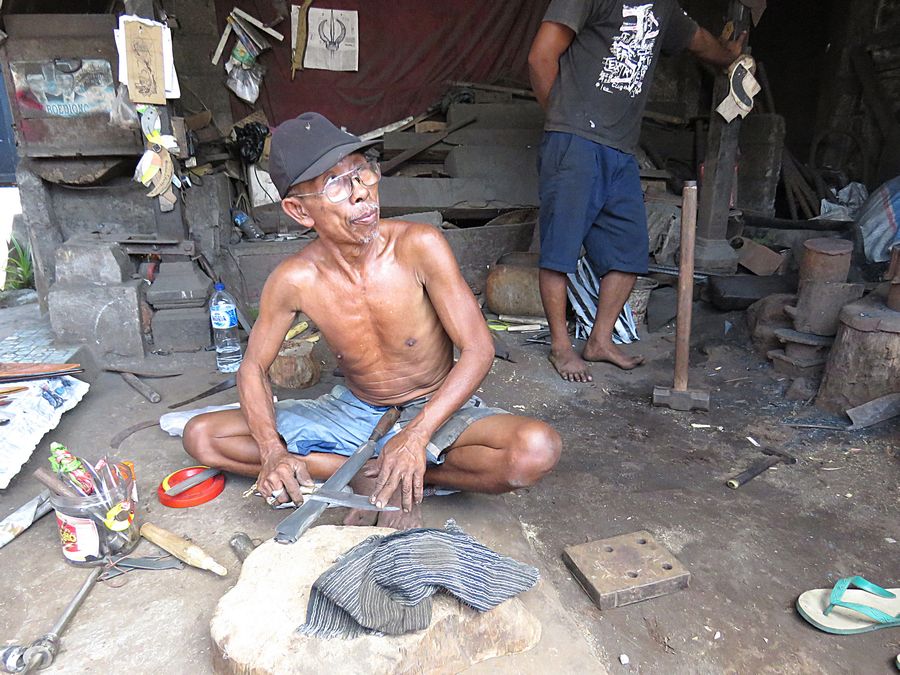
At blacksmith shop
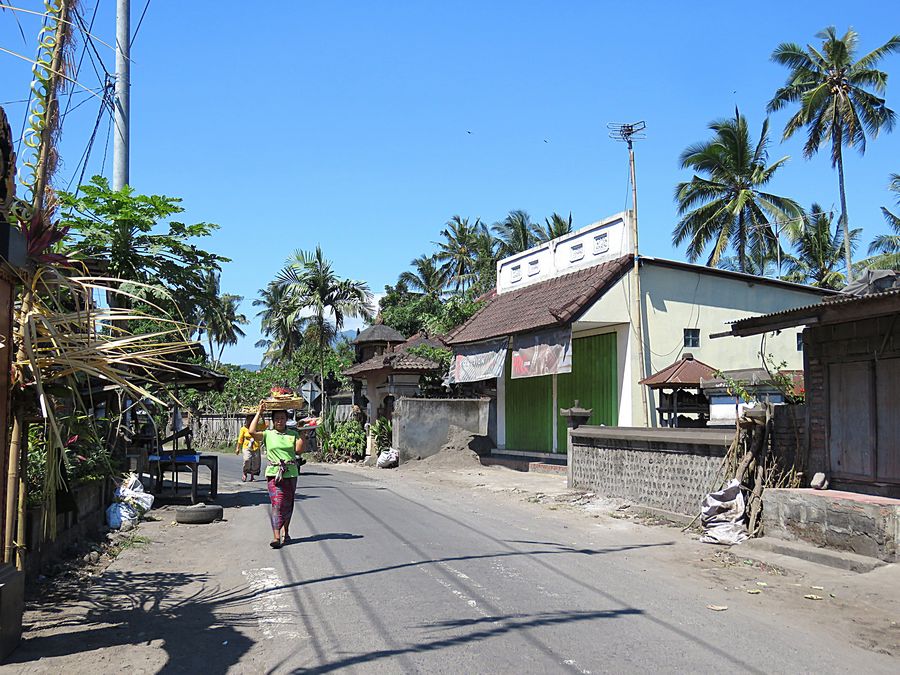
Street scene in village of Budakeling, yet another area that
would have had to evacuate because of the threat of
Mt. Agung eruption.
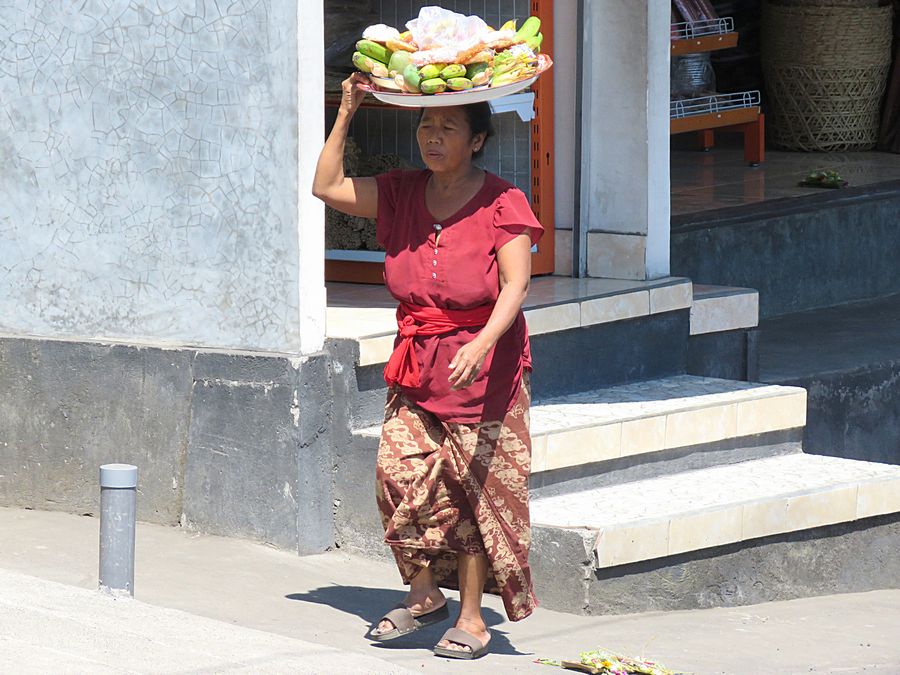
Woman in the village. You can barely see the type of offering
that is put in front of a Hindu home daily (to the right of her left foot).
Balinese are out early sweeping up the previous day’s offerings
from around their businesses and homes. Buckets of water
are used to wet down the sidewalk, and they scrub
the area around the doorway.
The streets of Bali are spotless in the early morning hours;
and sidewalks, steps, statues, and temples are ready for the
daily gift
of offerings meant to appease and please
the various gods and demons of Balinese Hinduism.
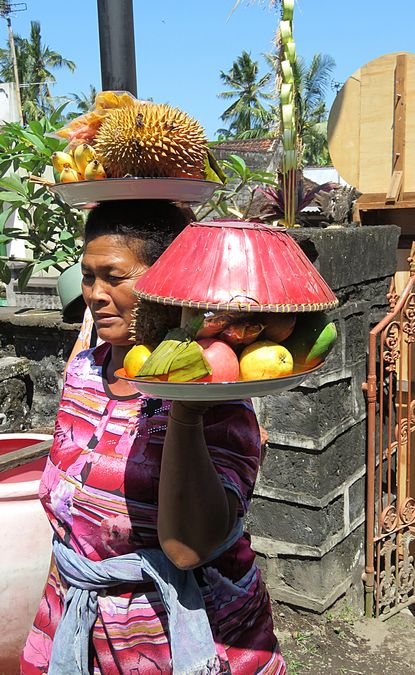
Woman bringing offerings to Hindu temple
for a special ceremony in Budakeling. There was a line
of women coming with offerings.
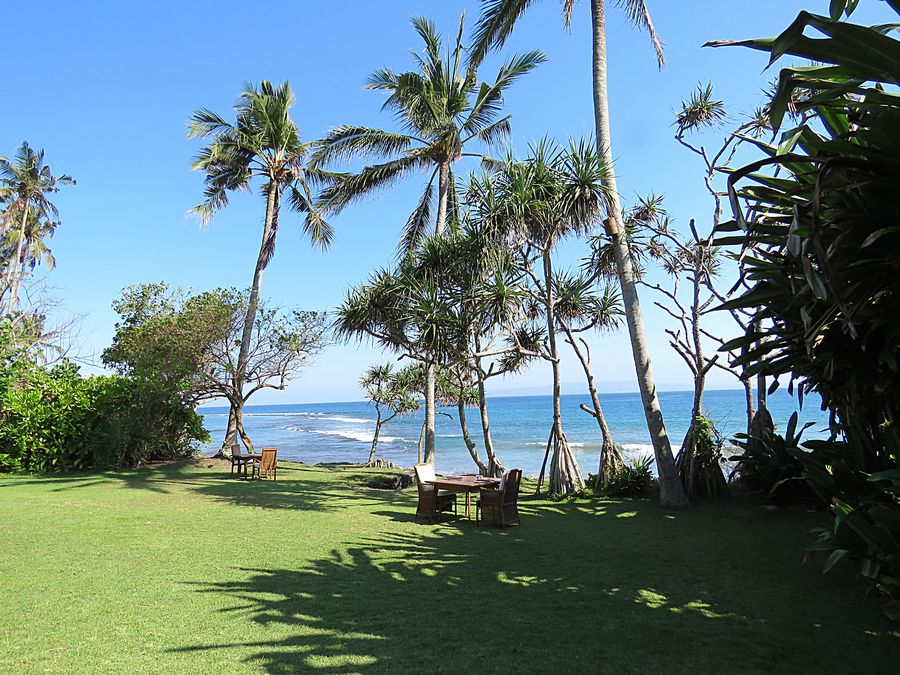
At Alila Manggis Hotel in Candidasa at the Indian Ocean,
where we stayed.
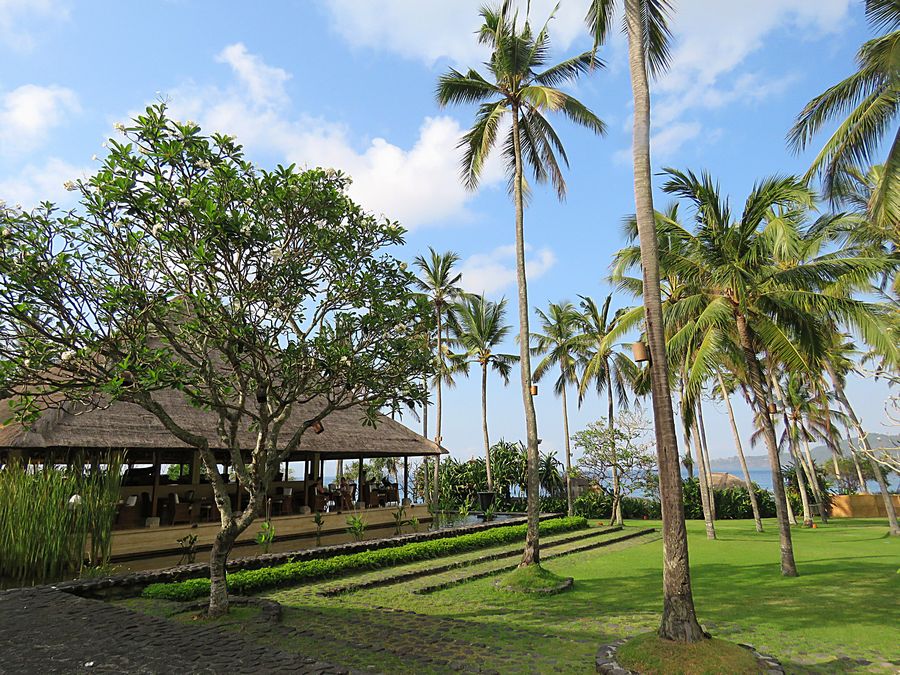
Dining area of Alila Manggis Hotel near the beach, not a good swimming beach
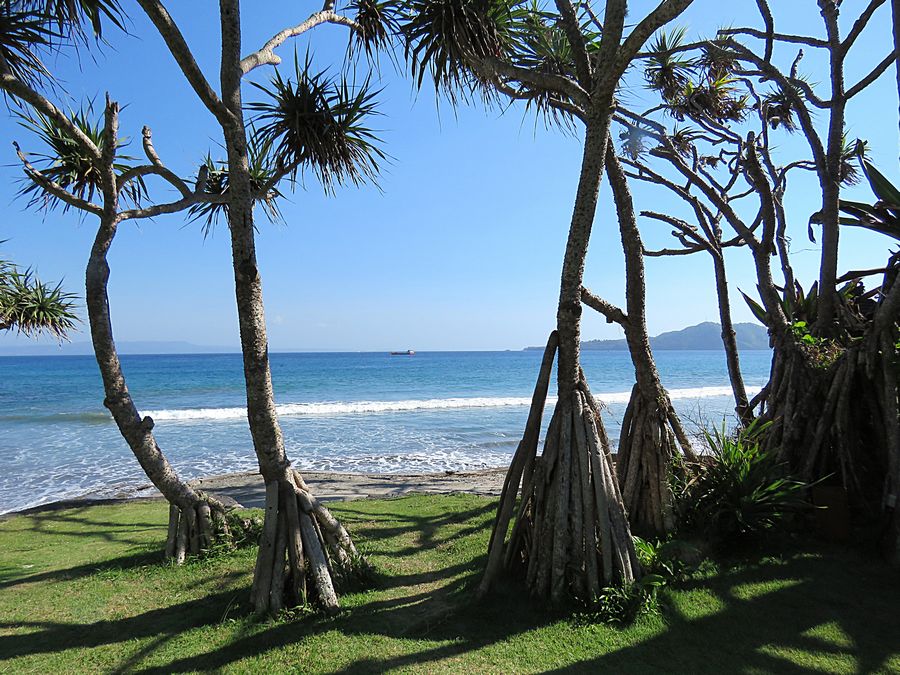
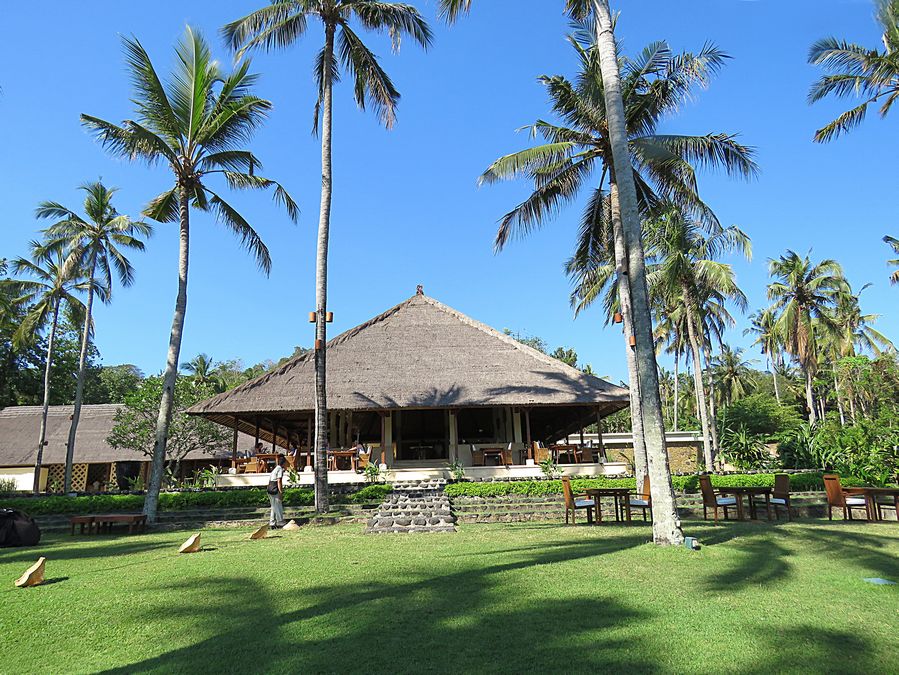
View of dining area from the beach. High tea was served
on the grounds of the hotel late afternoons.
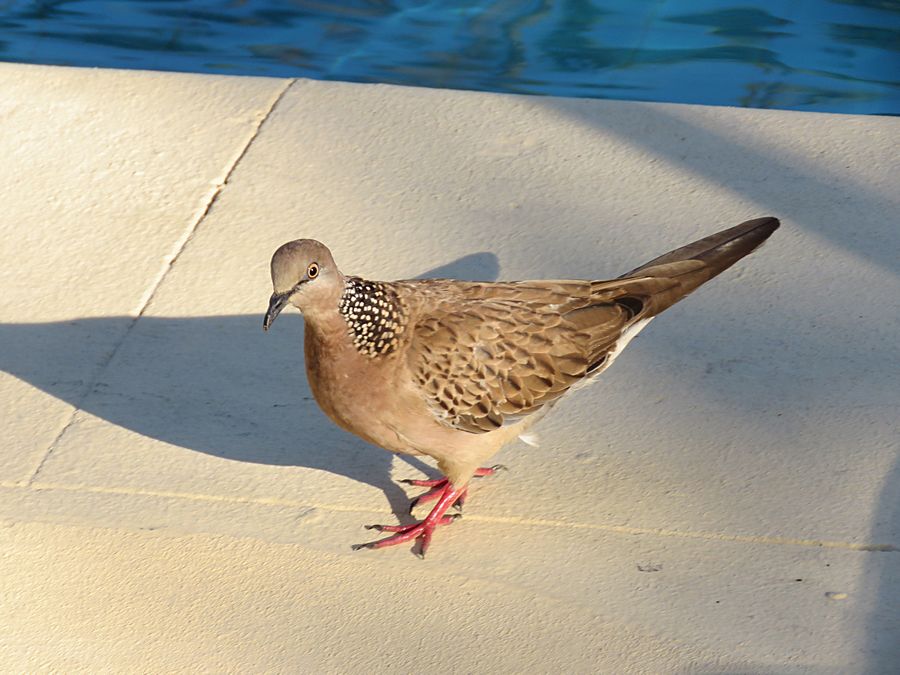
Spotted dove that was roaming the resort area
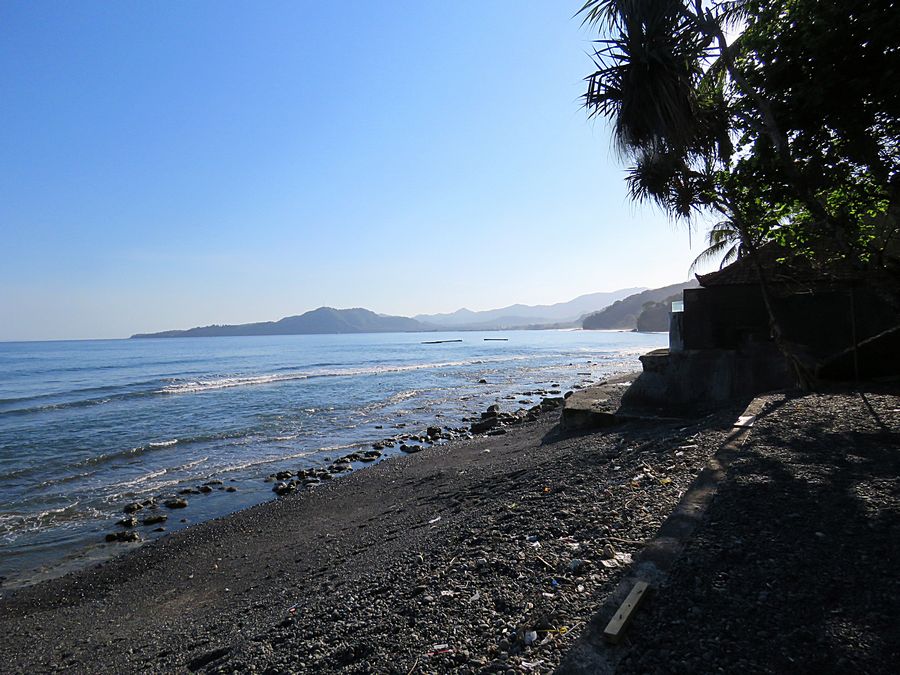
Black sand beach at the hotel at dusk
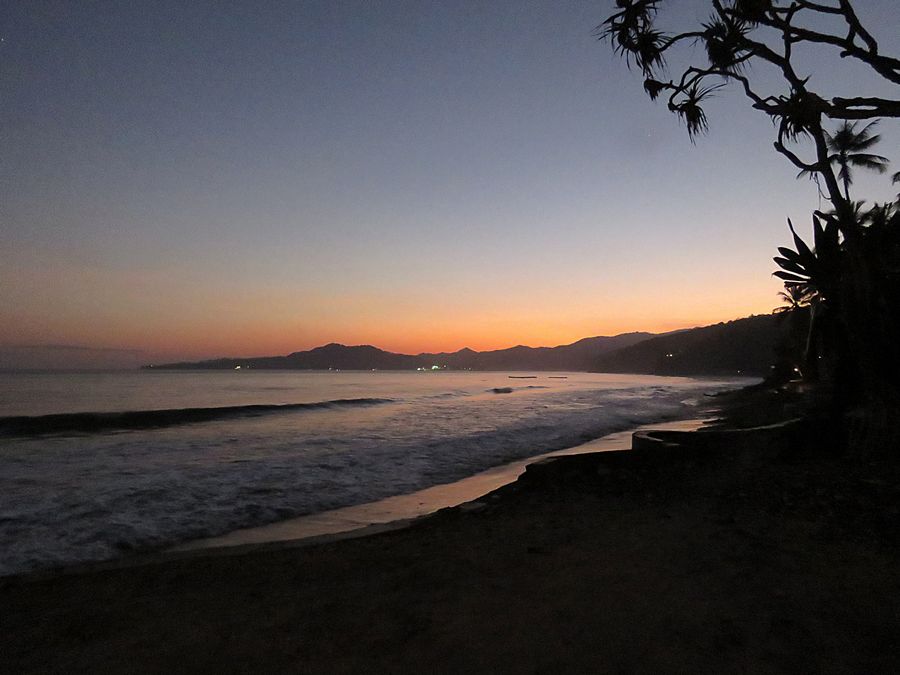
Sunset
Link to Part Two, Page Three - Sudamala Temple; Travel to Ubud, Bali
Pat's Home Page